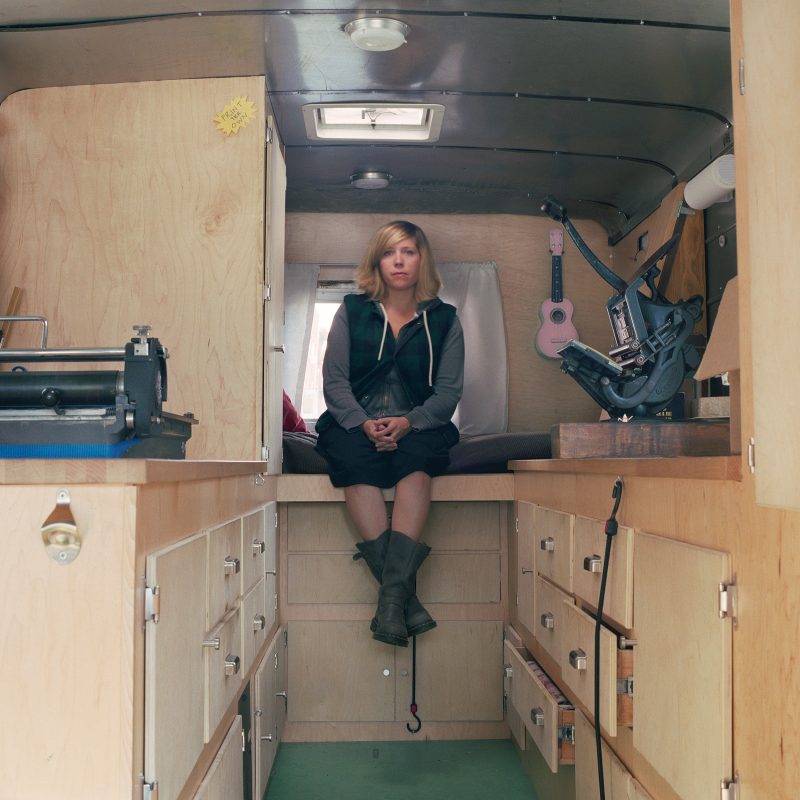Tanja Hollander is a Portland, Maine–based photographer who, since early 2011, has been on an epic road trip during which she’s been taking portraits of every one of her Facebook friends (some of whom she’s never met before) in their homes, where she spends the night. The portraits are stark and deceptively casual, lit with available natural light, usually shot in kitchens and living rooms. In addition to the intimate glimpse into people’s spaces, simple information is offered with each image (name, location, how they met Hollander and how long ago), which serves to underscore the sometimes tenuous nature of Hollander’s (and our) virtual associations and attachments.
—Elisa Albert
Kyle Durrie (in Type Truck)

THE BELIEVER: How do you know Kyle?
TANJA HOLLANDER: She was waitressing in Portland and showing her work, and when I started showing my work, what I decided I’d do is whenever I sold a piece I’d buy a piece from a younger artist. She was the first person I bought work from: these beautiful line drawings. She introduced herself and thanked me, and we stayed in contact, and she moved to Oregon and got involved with letterpress. She wanted to convert a truck into a letterpress studio and came back to Maine to decompress and figure some stuff out. I was like, “Come over for dinner ’cause I’m also thinking about doing this travel project.” And we wound up starting our two projects at almost exactly the same time. She did a year of traveling around in the truck, teaching people letterpress, giving workshops. We kept missing each other on the road for the first year. She’s really fucking awesome: her sense of humor. I went to see her in Silver City, New Mexico, and the truck was the guest room, so I got to sleep in it. I want to say it’s a Chevy.
BLVR: How many “friends” have you photographed so far?
TH: Three hundred and eighty-six. Almost halfway through.
BLVR: Do you instruct your subjects not to smile?
TH: I’m shooting really long exposures, so people have to sit really still for about a second. Which isn’t that long in the history of photography, but it’s long for us now. If you have big lights and flashes and stuff, you can shoot anyone in motion anywhere, but that stuff is huge and heavy and I want to travel light, unobtrusively. I’m shooting on film, using only available light, so I’m really dependent on what’s there. It is partly technical, but I’m trying to honor historical portraiture, too....
You have reached your article limit
Sign up for a digital subscription and continue reading all new issues, plus our entire archives, for just $1.50/month.
Already a subscriber? Sign in




